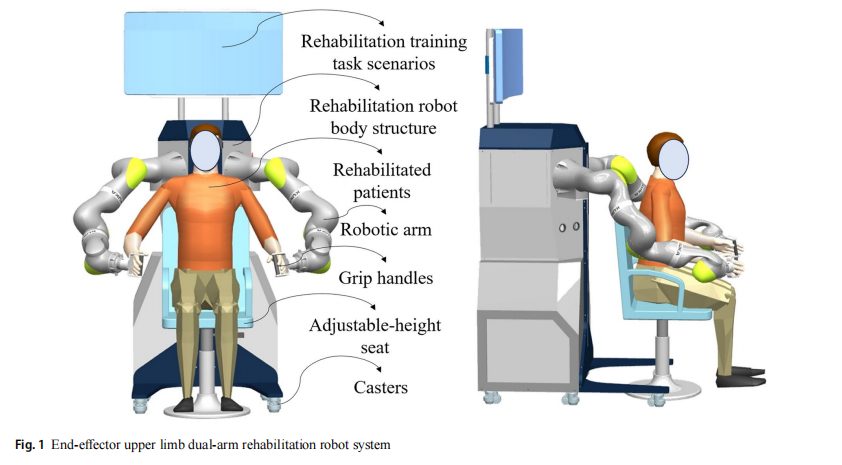Journal of Bionic Engineering (2025) 22:670–683 https://doi.org/10.1007/s42235-025-00665-0
Research on Mirror-Assisted Rehabilitation Training Method Based on Dual-Arm Robots
Xiaolong Yang1,2 · Qing Sun1,2,3 · Shuai Guo1,2
1 School of Mechatronic Engineering and Automation, Shanghai University, Shanghai University, Shanghai 200444, China
2 National Demonstration Center for Experiment Engineering Training Education, Shanghai University, Shanghai 200444, China
3 Hangzhou Innovation Institute, Beihang University, Hangzhou 310051, China
Abstract
This paper studies a mirror-assisted rehabilitation training method based on a dual-arm robot, which aims to provide an effective rehabilitation training program for patients with upper limb dysfunction due to stroke or other causes. During the mirror training task scenario, the subjects are visually guided to perform the mirror movement of both arms, and the dual-arm robot is used to facilitate the mirror-assisted rehabilitation from the healthy side to the affected side. Adaptive impedance control and force field channel design ensure the stability and safety of the rehabilitation process. In the rehabilitation training, appropriate assistance forces are provided within the channel to correct trajectory deviations, ensuring that the subjects’ movement path aligns with the predetermined trajectory. Outside the channel, the superposition of stiffness and correction force fields prevents the subjects from deviating from the predetermined trajectory, thus avoiding injuries. In addition, the adaptive impedance control is capable of dynamically adjusting the impedance parameters according to the real-time state of the subjects, providing a personalized rehabilitation training program. This method significantly enhances both the safety and effectiveness of the rehabilitation training. The experimental results showed that the subjects’ motion flexibility and safety were significantly improved during the mirror-assisted rehabilitation training. This study offers a new approach for the future development of rehabilitation robotics with broad application potential.
Keywords Mirror-assisted rehabilitation · Dual-arm robot · Adaptive impedance control · Force field channel design

Copyright © 2025 International Society of Bionic Engineering All Rights Reserved
吉ICP备11002416号-1









